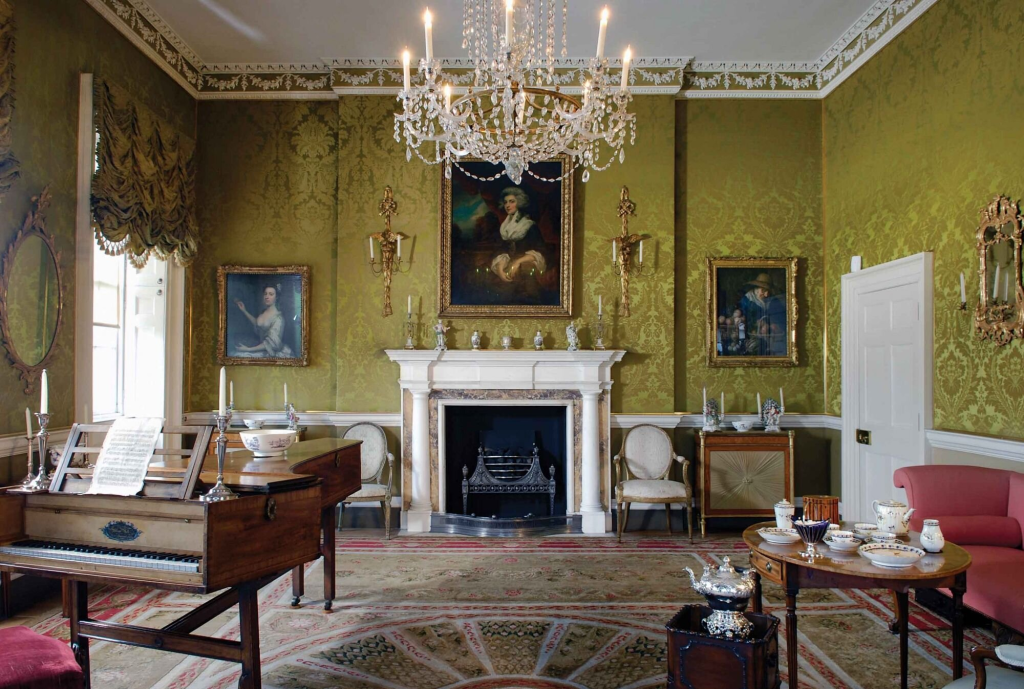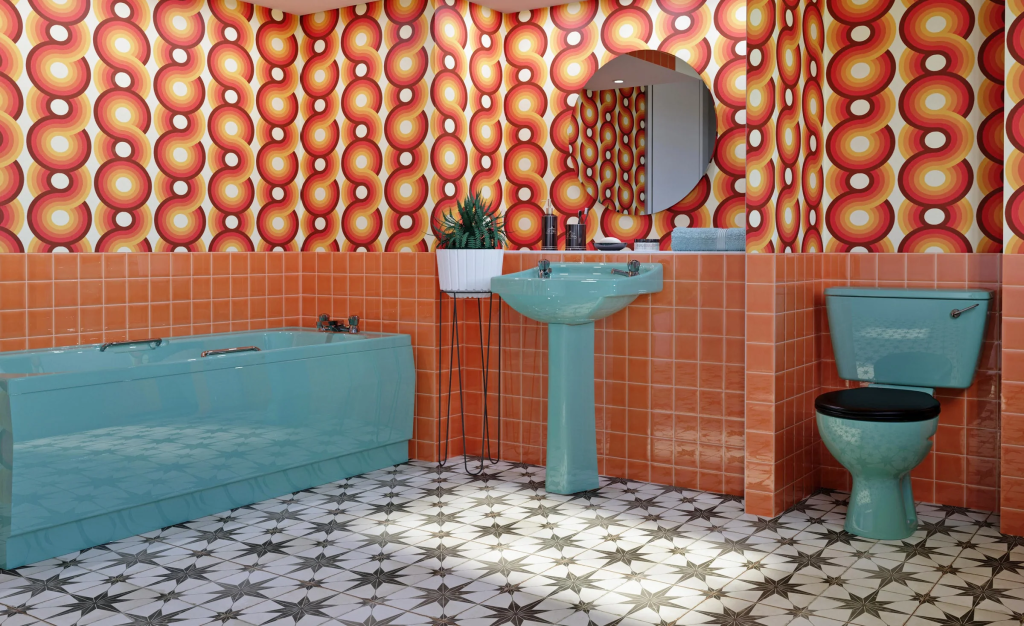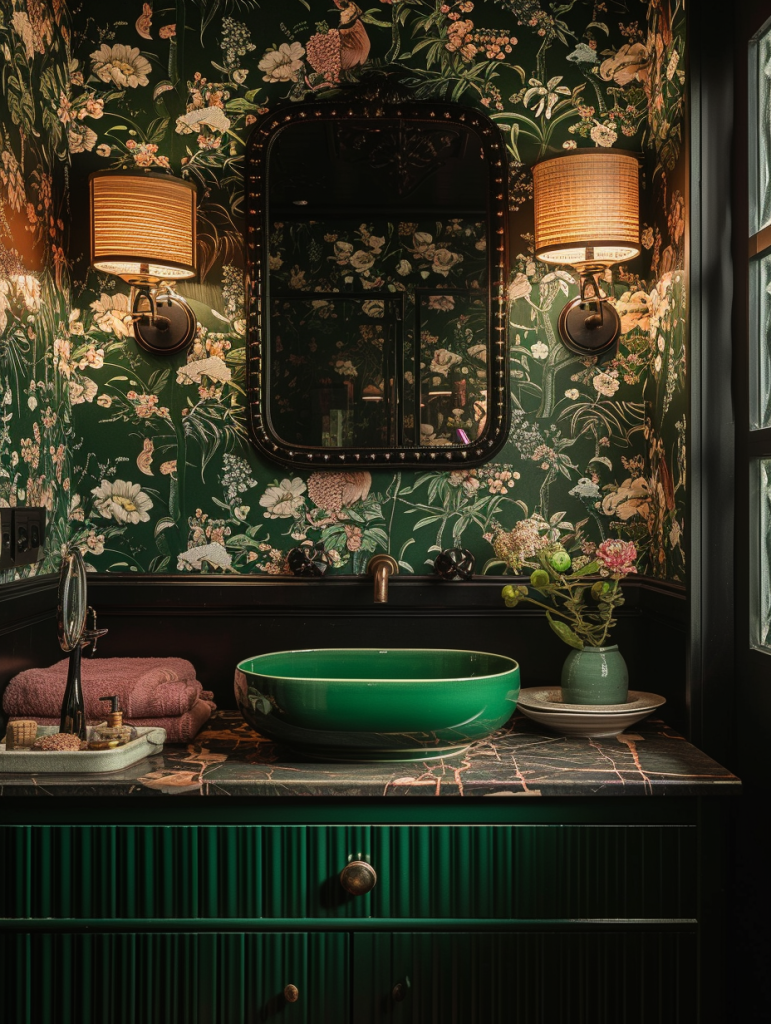British interior design has evolved dramatically over the centuries, reflecting changes in society, culture, and technology. From the stately homes of the Tudor period to the modern, minimalist spaces of today, each era tells a unique story through its distinct design choices. Here, we take a journey through time, exploring the defining features of British interior design trends over the ages.
Tudor Period (1485-1603): Dark, Ornate, and Stately

The Tudor period was a time of grandeur and opulence in British interior design. Homes during this era were known for their dark wooden beams, intricately carved furniture, and heavy, richly coloured tapestries. The Tudor aesthetic was heavily influenced by Gothic design, with large fireplaces serving as central features of rooms. Ceilings were often adorned with exposed wooden beams, creating a sense of grandeur and warmth. Leaded glass windows and thick stone walls were common, contributing to the solid and imposing nature of Tudor interiors.
Key materials included oak and stone, while furniture often featured elaborate carvings and upholstery in deep colours like burgundy and forest green. Interiors were designed to showcase wealth and status, with luxurious textiles such as velvet and damask playing a crucial role in adding comfort and elegance.
Georgian Era (1714-1837): Symmetry, Elegance, and Palladian Influence

The Georgian period marked a shift towards lighter, more elegant designs, influenced by the Palladian style. Symmetry became a hallmark of Georgian interior design, with rooms often laid out in balanced, harmonious proportions. Soft pastel colours such as pale blue, sage green, and cream replaced the darker hues of the Tudor period, creating a sense of light and airiness.
Furniture during the Georgian era was more refined and elegant, with a focus on clean lines and graceful curves. Mahogany was a popular choice, and intricate details like cabriole legs and ball-and-claw feet were common. Decorative plasterwork, such as cornices and ceiling roses, was also a key feature, adding sophistication to interiors. Fireplaces remained a focal point, but they became more delicate and ornamental compared to their Tudor predecessors.
Victorian Era (1837-1901): Eclecticism, Ornamentation, and Industrial Influence
The Victorian era saw a return to opulence, but with a more eclectic approach than in previous periods. This was a time of industrial advancement, which allowed for mass production of furniture and home décor, making elaborate designs accessible to a wider audience. Interiors during the Victorian period were characterised by a mix of styles, including Gothic revival, Rococo, and Art Nouveau influences.
Victorian homes were often filled with heavy, ornate furniture made from dark woods such as mahogany and walnut. Rooms were cluttered with decorative items, including patterned wallpapers, rich fabrics, and intricate rugs. The Victorians embraced bold, dramatic colours like deep reds, greens, and golds. Wallpaper became a key feature, often featuring floral or geometric patterns, and was used in nearly every room of the house.
Edwardian Era (1901-1914): Light, Airy, and Less Formal
In contrast to the heavily decorated Victorian interiors, the Edwardian era embraced a lighter, more relaxed style. Edwardian design was characterised by a return to simplicity and elegance, with a focus on lighter colours, floral patterns, and a sense of openness. Homes were designed to let in more natural light, with larger windows and lighter, brighter colour schemes.
Furniture became less ornate and more functional, often made from lighter woods such as oak and ash. The Arts and Crafts movement, which emphasised craftsmanship and simple, natural materials, also influenced Edwardian interiors. Floral patterns were popular in fabrics and wallpapers, contributing to the overall lightness of the period’s design.
Art Deco (1920s-1930s): Glamour, Geometric Shapes, and Bold Colours
The Art Deco movement, which gained popularity in the 1920s and 1930s, brought a sense of glamour and modernity to British interiors. This style was all about bold geometric shapes, luxurious materials, and vibrant colours. Art Deco design was heavily influenced by advances in technology and the excitement of the Jazz Age.
In British homes, Art Deco interiors featured sleek, streamlined furniture with chrome, glass, and lacquered finishes. Bold patterns, such as zigzags and chevrons, adorned wallpapers, textiles, and even flooring. Colours like black, silver, gold, and jewel tones were popular, creating a sense of drama and luxury. Art Deco was a forward-looking style, celebrating modernity and progress.
Post-War (1940s-1950s): Functionalism and Modernism
After World War II, British interiors underwent a significant transformation, with a focus on practicality and simplicity. The austerity of the post-war years meant that design became more functional and less ornate. The Modernist movement, which favoured clean lines, minimalism, and functionality, greatly influenced post-war interiors.
Designers created furniture to be practical and affordable, often incorporating new materials like plywood and plastics. Colour schemes were more subdued, with pastel shades and neutral tones becoming popular. The Scandinavian influence also began to emerge, with its emphasis on light, airy spaces and simple, well-made furniture.
1960s-1970s British Interior Design: Bold, Playful, and Experimental

The 1960s and 1970s brought a sense of experimentation and fun to British interiors. This was a time of vibrant colours, bold patterns, and unconventional design choices. Pop art and psychedelic influences were evident in many homes, with bright, contrasting colours and quirky furniture shapes becoming the norm.
In the 1970s, there was a revival of interest in natural materials, with a focus on earth tones like brown, orange, and mustard. Rattan furniture, shaggy carpets, and macramé became popular, creating a relaxed, bohemian vibe. Open-plan living spaces also became more common, reflecting a desire for more flexible and informal layouts.
Contemporary British Interior Design: Minimalism and Eclecticism

In recent years, British interior design has become more diverse and eclectic, with a mix of modern minimalism and vintage influences. Clean lines, neutral colour palettes, and natural materials dominate many contemporary British homes, with an emphasis on creating calm, clutter-free spaces. Scandinavian design continues to be a major influence, with its focus on simplicity and functionality.
However, there has also been a resurgence of interest in traditional British craftsmanship and heritage styles. Many homeowners are blending modern minimalism with vintage pieces, creating unique, personalised spaces that reflect both past and present.
British Interior Design Trends: A Reflection of History and Culture:
A rich history has shaped British interior design trends, with each era actively influencing how we style our homes today. From the grandeur of Tudor interiors to the sleek minimalism of contemporary design, British interiors have evolved to reflect changes in society, technology, and taste. Today, British homes are as diverse as the people who live in them, drawing inspiration from centuries of design while embracing modernity and individuality.










